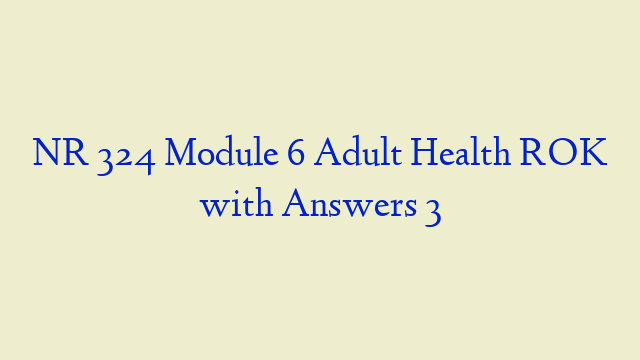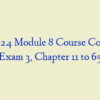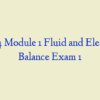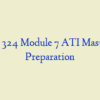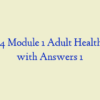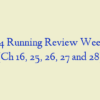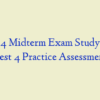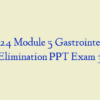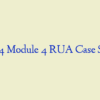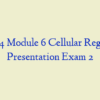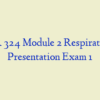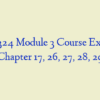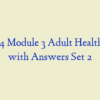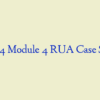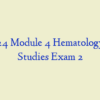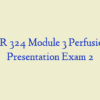Description
NR 324 Module 6 Adult Health ROK 3 (Question and Answers)
- Explain the process of wound healing by primary, secondary, and tertiary intention.
- Explain surgical, mechanical, autolytic, and enzymatic debridement.
- Describe the risk factors for pressure ulcers.
- Explain the red-yellow-black wound concept (description, characteristics, give examples)
- Differentiate the characteristics of stage I, II, III, IV, deep tissue injury, and unstageable ulcers. (See table 12-13).
- Describe at least 5 patient/caregiver teaching information for AIDS patients.
- Provide at least 5 different patient/caregiver teaching concepts regarding pressure ulcers.
- Describe the common HIV prevention and early detection methods
- Explain the different types of immunity (Innate, Acquired, Active acquired & passive).
- Describe the emergency management of a patient who is in anaphylactic shock, (initial interventions.
- Explain how HIV is contracted? (Be careful, do not include rumored information, and stick to the facts).
- Describe the methods used to test for HIV infection.
- Describe the diagnostic criteria for acquired immunodeficiency syndrome (AIDS).
- Explain the significance of opportunistic infections associated with AIDS. Give some examples of the infections along with their characteristics.
- Explain antiretroviral drug therapy (ART), and their side effects.
- Describe the proper physical assessment order for a GI system.
- Explain the nursing responsibility regarding NGT insertion.
- Describe the proper assessment for checking the patency of an NG tube.
- Describe the delegation of care to UAP in regard toNGT’care, and maintenance.
- Describe the procedure and differentiate between the nursing care, assessment pre & post-procedure, and complications for the following diagnostic exams.
- Explain the condition of Hiatal Hernia, the defining characteristics, nursing management, (including nutrition) and patient teaching regarding this disorder.
- Describe which hiatal hernia is considered a medical emergency, and what are the complications of hiatal hernia?
- Differentiate between Bilroth I and Bilroth II surgical procedures. Explain the nursing assessment of both.
- Describe dumping syndrome and the client’s instructions regarding this condition.
- Differentiate between Gastric and Peptic Ulcers. Describe the nursing assessment and nutrition-client-education.
- Describe GERD, common assessment findings, nursing management, and client teaching regarding this condition. Make sure to include dietary and prevention techniques.
- Explain Esophageal CA and the clinical manifestations of this disease process. nr 324 module 6
- Describe the nursing management of nausea and vomiting. nr 324 module 6
- Describe the BRAT diet.
- Explain stomach cancer, what are the clinical manifestations. What is a priority goal/outcome for this condition?
- Describe oral cancer. What is the priority of nursing management regarding this condition?
- Differentiate between small bowel and large bowel obstructions. How will a nurse assess for these conditions?
- Explain the differences between Ulcerative Colitis and Crohn’s Disease, the clinical manifestations, treatment, and complications.
- Describe Celiac disease and its clinical manifestations. What type of diet recommendations should the nurse teach patients with Celiac disease?
- Explain the differences between diverticulosis and diverticulitis. Explain how each is treated, what are the differences in treatment?
- Describe C-difficile: Provide nursing care, (isolation), and client concerns for safety.
- Explain the clinical assessment and skin care for colostomy and ileostomy appliances.
- Describe osteomyelitis, and how is it diagnosed. nr 324 module 6
- Differentiate between Rheumatoid and Osteoarthritis, (describe assessment, treatment, client education, safety precautions, and medication regimen.)
- Describe-Systemic lupus erythematosus, assessment, and clinical manifestations. Describe client education to minimize complications
- Describe Gout, the clinical manifestations, and recommended treatment, including diet, and nursing management.
